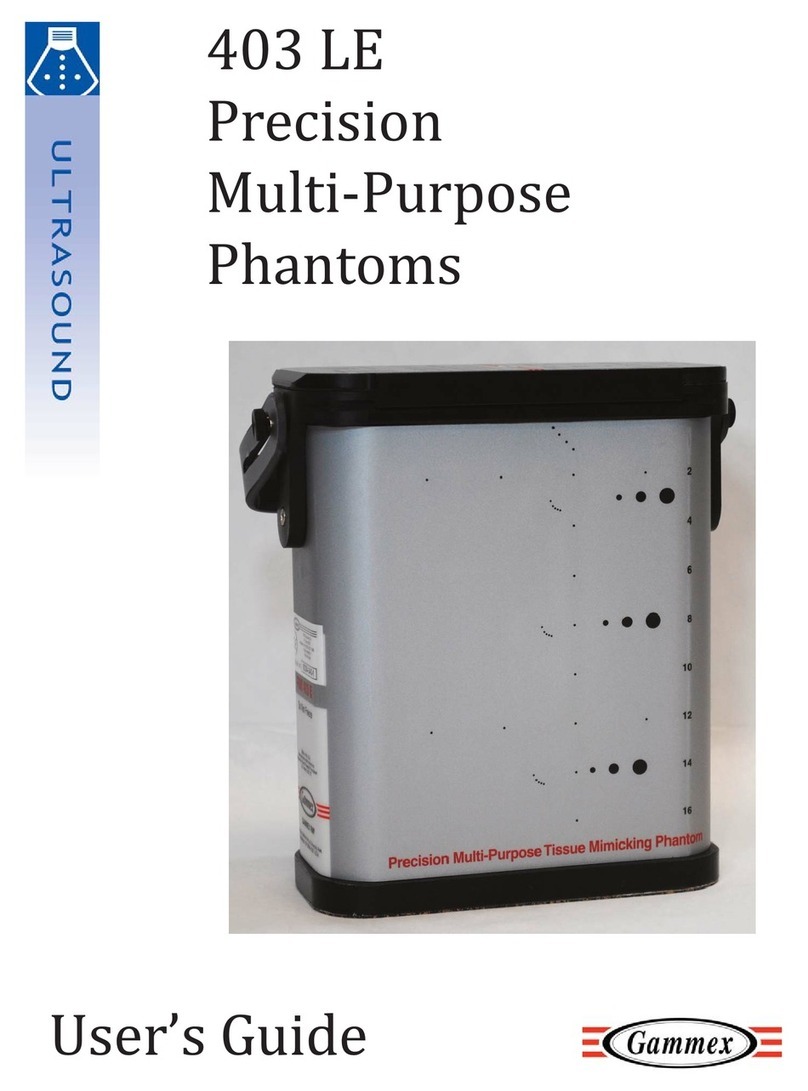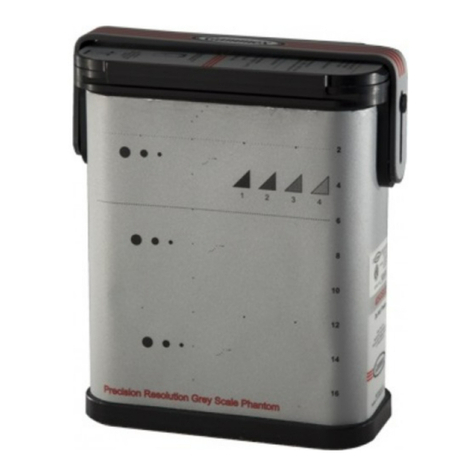2
Table of Contents
Introduction.......................................................................................3
Caring for your 404 LE......................................................................4
Scanning your 404 LE.......................................................................5
A Guided Tour of your 404 LE...........................................................6
Evaluating the Phantom....................................................................7
Target Configuration........................................................................11
Cystic Targets..................................................................................11
Pin Targets......................................................................................11
Resolution Target Groups..................................................................11
Phantom Specifications..................................................................13
Physical Specifications...................................................................13
Tissue Mimicking Background Material..........................................13
Harmonic Imaging..........................................................................14
Phantom Desiccation.....................................................................15
Charts and Graphs........................................................................15
Product Warranty...........................................................................16
Sales and Service..........................................................................17






























